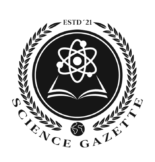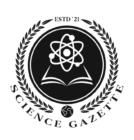
Physicists have tested Albert Einstein’s general theory of relativity, or more precisely, the phenomenon known as time dilation, at the lowest scale ever, demonstrating that two tiny atomic clocks separated by just a millimeter or the width of a sharp pencil tip tick at different speeds.
JILA researchers have tested Albert Einstein’s general theory of relativity, or more precisely, the phenomenon known as time dilation, at the lowest scale ever, demonstrating that two tiny atomic clocks separated by just a millimeter or the width of a sharp pencil tip tick at different speeds.
The studies, which were published in Nature on Feb. 17, provide a way to construct atomic clocks 50 times more exact than today’s finest designs, as well as a path to maybe exposing how relativity and gravity interact with quantum mechanics, a significant physics conundrum.
The National Institute of Standards and Technology (NIST) and the University of Colorado Boulder collaborate to run JILA.
“The most essential and intriguing conclusion is that we might possibly combine quantum physics with gravity,” said Jun Ye, a NIST/JILA Fellow. “For example, investigating complicated physics when particles are dispersed at various places in the curved space-time.” “It also demonstrates that there are no technical barriers to creating clocks 50 times more exact than they are now, which is excellent news.”
General relativity, Einstein’s 1915 theory, explains large-scale processes like the gravitational impact on time and has practical applications like correcting GPS satellite data. Physicists are still interested by the idea, despite the fact that it is almost a century old. Scientists at NIST have been using atomic clocks as sensors to measure relativity more accurately, which might help understand how its effects interact with quantum physics, the subatomic world’s code.
Atomic clocks at various altitudes in a gravitational field tick at different rates, according to general relativity. When detected under heavier gravity, closer to Earth, the frequency of the atoms’ emission is lowered — pushed toward the red end of the electromagnetic spectrum. At lower heights, a clock ticks more slowly. This effect has been proven on several occasions; for example, in 2010, NIST scientists observed it by comparing two independent atomic clocks, one of which was positioned 33 centimeters (approximately 1 foot) above the other.
The JILA team has now recorded frequency changes between the top and bottom of a single sample of 100,000 ultracold strontium atoms put into an optical lattice, a lab setting identical to the group’s previous atomic clocks. The lattice, which may be pictured as a stack of pancakes made by laser beams, in this novel situation features extraordinarily big, flat, thin cakes that are formed by less powerful light than is commonly utilized. This design decreases the lattice distortions often generated by light and atom scattering, homogenizes the sample, and extends the atoms’ matter waves, whose forms indicate the likelihood of locating the atoms in certain places. The energy states of the atoms are so well regulated that they all clicked between two energy levels in perfect synchronization for 37 seconds, setting a new record for quantum coherence.
The Ye group’s imaging innovation, which produced a tiny map of frequency distributions throughout the sample, and their way of comparing two sections of an atom cloud instead of two independent clocks, were critical to the new discoveries.
The observed redshift over the atom cloud was negligible, in the range of 0.0000000000000000001, as predicted. (While the variations are too minor for humans to see, they build up to significant impacts on the cosmos as well as technologies like GPS.) For this sort of trial, the study team was able to resolve the disparity in around 30 minutes of data averaging. Their measurement accuracy was 50 times greater after 90 hours of data than any prior clock comparison.
“This is a whole new ballgame,” Ye said, “a whole new realm where quantum physics in curved space-time may be probed.” “We will be able to observe the atoms’ whole matter waves across the curvature of space-time if we can measure the redshift 10 times better than this. Being able to quantify time differences on such a small scale might lead to discoveries like gravity disrupting quantum coherence, which could explain why our macroscale world is classical.”
Beyond timekeeping and navigation, better clocks may be used for a variety of purposes. According to Ye, atomic clocks can be used as both microscopes and telescopes to examine the universe’s farthest corners and to detect microscopic linkages between quantum physics and gravity. He’s looking for enigmatic dark matter, which is thought to make up the majority of the universe’s stuff, using clocks. Through the use of a measuring discipline known as relativistic geodesy, atomic clocks have the potential to enhance models and knowledge of the Earth’s form.
The Defense Advanced Research Projects Agency, the National Science Foundation, the Department of Energy Quantum System Accelerator, NIST, and the Air Force Office for Scientific Research all contributed money to the project.

